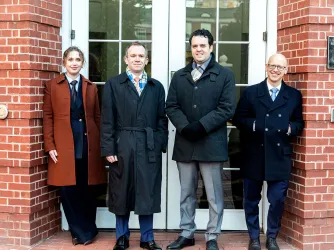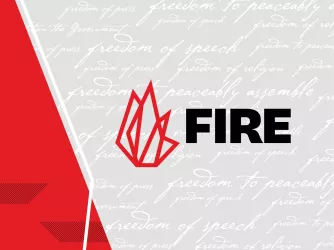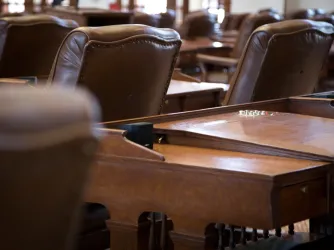Table of Contents
High School Sexual Harassment Case Illuminates Key Points About 'Blueprint'
On July 9, a federal district court in Pennsylvania granted a high school history teacher’s motion for summary judgment over a student’s claim that his manner of teaching “Twentieth Century History” amounted to sexual harassment. The case, Young v. Pleasant Valley School District, reaffirms the importance of allowing open discussion on topics that some students might find offensive or uncomfortable to hear, particularly in the school setting. FIRE has emphasized this principle countless times, most recently in light of the Departments of Education (ED) and Justice’s (DOJ’s) “blueprint” for campus sexual harassment policies.
In Young, plaintiff M. Young alleged that her teacher, defendant Bruce Smith, “created a sexually hostile classroom environment that deprived M. Young of the equal protection of the laws in violation of the Fourteenth Amendment ...” (slip op. at 4–5). Smith’s classes included discussions about historical figures’ sex lives, an inquiry as to whether male students found murder victim Sharon Tate attractive, and remarks about Smith’s sexual past, for example, delivered via “a combination of lecture, powerpoint, and video and audio clips.” While M. Young conceded that many students were drawn to Smith’s class because of its “unorthodox” nature, she claimed that Smith’s comments and visual aids created a hostile environment for her.
The court held that “no reasonable person who experienced Smith’s questionable classroom speech ... could have considered it so sexually hostile or abusive that she was disadvantaged ... in her ability to benefit from the edifying aspects of a semester in his Twentieth Century History course” (slip op. at 33).
The holding again illustrates a disconnect between settled First Amendment law in the school context and the problem of schools curtailing protected speech via harassment policies—a problem that will be exacerbated on college campuses by implementation of ED and DOJ’s blueprint, in which the federal agencies defined sexual harassment as “any unwelcome conduct of a sexual nature” including “verbal conduct” (i.e. speech).
On its face, the blueprint’s definition of sexual harassment encompasses the kind of speech M. Young found objectionable; Smith’s speech was “verbal conduct” of a “sexual nature,” and the plaintiff student found it unwelcome. The court in Young, though, held that Smith’s speech was an acceptable part of his lesson plan and did not create an objectively hostile environment. And the court reached this conclusion despite the fact that speech is normally less protected in the high school context than it is in the college setting. This result illustrates just how far removed from the First Amendment ED and DOJ’s mandate is. The blueprint requires reporting of, allows punishment for, and attaches stigma to, the sort of speech that this case found not to be harassment even between a teacher and a minor-student.
In ruling for Smith, Judge Matthew W. Brann makes several points that are relevant to analyzing the federal blueprint. First, he notes the context of the speech and how that informs whether a reasonable person would experience Smith’s class as a hostile environment. The topic of twentieth century history necessarily involves “complex, and at times uncomfortable, questions of race, religion, violence, and also sex and sexuality” (slip op. at 35) (citation omitted). Discussion of such questions must be protected in order to ensure the strength of education generally. Judge Brann even cites ED’s Office for Civil Rights’ 2001Revised Sexual Harassment Guidance for the idea that anti-discrimination laws must be applied “so as to protect academic freedom and [the] free speech rights” of students and teachers. On college campuses, deemed by the Supreme Court to be “peculiarly the ‘marketplace of ideas,’” and especially among young adult peers, this interest in promoting frank discourse on difficult topics is even more compelling.
Second, in finding that “a reasonable person in M. Young’s shoes would not find Smith’s questionable speech so sexually hostile or abusive that she was disadvantaged … in her ability to benefit” from the course, Judge Brann relies in part on the fact that “in all but one instance, M. Young was never the target of Smith’s comments” (slip op. at 55). Rather, Smith directed his speech at the entire class.
In contrast, ED and DOJ’s blueprint contains no such requirement that the allegedly harassing conduct be targeted at the complaining individual. Judge Brann explains why this factor should be a serious consideration in drawing the line between actionable harassment and protected speech:
[C]ourts generally take the view that statements either not addressed to the plaintiff individually, or not about the plaintiff, are less significant contributors to a hostile environment. ... Discounting the offensiveness of speech that is not targeted makes sense because the Supreme Court in Harris v. Forklift Sys., Inc., 510 U.S. 17 (1993), referred to a continuum of defendants’[] behavior ranging in seriousness from that which is “physically threatening or humiliating” to “a mere offensive utterance,” and speech that is not targeted is, without more, the latter. Id. at 22.
[...]
“Harassment law generally targets conduct, and it sweeps in speech as harassment only when consistent with the First Amendment.” … When speech is directed at an audience and does not single out audience members, it is least likely to be offensive because of its non-expressive aspects (if any), and most likely to be offensive because of its message. [Citation omitted, slip op. at 57–58.]
A school may prohibit or punish speech when it contributes to a discriminatory pattern of conduct but not simply for its message. When a prohibition on harassment reaches beyond speech that amounts to discriminatory conduct, it becomes in effect a “general civility code” (slip op. at 7).
The ruling also contains a cautionary tale for readers who are still skeptical that policies modeled after the blueprint might be used to punish college professors’ classroom discussions. Judge Brann cites Cohen v. San Bernardino Valley College, 92 F.3d 968 (9th Cir. 1996), in which a student claimed that her English professor’s classroom speech violated the college’s sexual harassment policy. That policy’s language was similar to that of ED and DOJ’s blueprint; it prohibited “verbal, written, or physical conduct of a sexual nature ... [that] has the purpose or effect of ... creating an intimidating, hostile, or offensive learning environment.” A federal district court held that the professor’s First Amendment rights were not violated when the school punished Cohen under the policy for offenses such as “assigning provocative essays” and “discuss[ing] subjects such as obscenity, cannibalism, and consensual sex with children in a ‘devil’s advocate’ style.” The U.S. Court of Appeals for the Ninth Circuit reversed that decision, holding that the policy was “simply too vague as applied to Cohen.” But Cohen illustrates that the risk the blueprint poses to college professors’ speech is real and significant.
Unfortunately, Cohen is not the only example of sexual harassment policies wielded against protected classroom speech. The cases of Appalachian State University professor Jammie Price and University of Denver professor Arthur Gilbert—both of whom were punished for their classroom speech—demonstrate this as well. In fact, the American Association of University Professors’ Committee on Women in the Academic Profession recognized these potential repercussions of the blueprint in its letter to ED and DOJ sent in June.
Young serves as a reminder of the important speech that could be chilled or punished under sexual harassment policies that are modeled after ED and DOJ’s blueprint. Honest conversations about history, society, the arts, and our own values cannot be censored based on what any one individual finds subjectively objectionable. That’s true even in a high school classroom full of teenagers, but it is especially so on a campus full of adults.
Thanks to Professor Eugene Volokh for alerting FIRE about this case.
Recent Articles
Get the latest free speech news and analysis from FIRE.

VICTORY: Jury finds Tennessee high school student’s suspension for sharing memes violated the First Amendment

DOJ must not investigate elected officials for criticizing immigration enforcement

FIRE statement on calls to ban X in EU, UK
